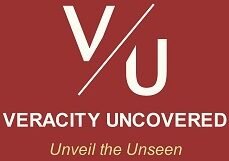SSF

PAC is the ‘colloquial term’ used broadly for all “political action committees,” including SSF.
“Corporations, unions, and labor organizations” cannot use their general treasury funds to contribute directly to “federal candidates, parties, or committees.” This is a cornerstone of ‘federal campaign finance law’ to prevent undue corporate/union influence.
FECA allows these organizations to create SSFs (i.e., political action committees) to engage in federal election activities. SSFs are legally distinct entities with their own bank accounts. All SSF contributions must go into a bank account wholly separate from the sponsor’s general treasury. No “commingling” of corporate/union money with PAC money is ever allowed. The SSF’s bank records form the basis of FEC disclosure reports, so that “donors and amounts” remain public.
SSFs can solicit voluntary contributions from a narrow set of individuals — called the “restricted class” — and use those monies for federal political activities. SSFs cannot solicit the “general public, non-members, or employees of unrelated organizations.” Example: A corporate SSF cannot ask for donations from ‘customers, vendors, or the general public.’
Restricted Class -
The restricted class refers to “the specific group of individuals” an SSF is legally allowed to solicit for contributions. Contributions must be explicitly voluntary. Organizations cannot “coerce or incentivize donations” (e.g., threatening job consequences for non-contributors).
Who is Included in the Restricted Class? -
For Corporations (including incorporated trade associations and subsidiaries):
- Executives, administrative personnel, and stockholders (and their families). Includes individual stockholders — not institutional investors or mutual funds.
- Employees (current or retired) of the corporation or its subsidiaries.
- Example: A tech company’s SSF can solicit donations from its CEO, engineers, and stockholders.
For Unions/“Labor Organizations”:
- Members of the union (current or retired). And, families of these.
- Employees of the union.
- Example: A teachers’ union’s SSF can solicit contributions from its dues-paying members.
Trade Associations:
- May solicit “employees or members” of the association’s affiliated corporations or unions.
- Families of the above.
For Membership Organizations, Cooperatives:
- Individual members in good standing.
- Executive and administrative personnel of the organization.
- Families of the above.
Who is Not in the Restricted Class? -
- General public.
- Hourly employees (for corporations).
- Union non-members.
- Customers, clients, or mere newsletter subscribers.
- Institutional investors. Institutional corporations/entities such as “hedge funds, private equity firms, banks, or pension funds” (even if they hold shares in the sponsoring corporation).
- Business entities structured as partnerships (e.g., law firms, consulting firms).
- A parent company to its subsidiary’s SSF.
- Nonprofit entities (e.g., 501(c)(3) charities, 501(c)(4) social welfare groups).
Activities of an SSF -
Direct contributions -
An SSF may contribute up to “$5,000 per election (primary, general, runoff, special)” to any federal candidate’s committee. And, may contribute up to “$15,000 per year” to a national party committee (limits indexed for inflation).
Example: If a candidate runs in both ‘a primary and general’ election in the same year, an SSF could contribute up to “$5,000 for each election” ($10,000 total in that calendar year).
Independent expenditures -
SSFs may spend unlimited amounts on independent expenditures (e.g., ads advocating for/against candidates) if “funded by voluntary contributions” and properly reported. These expenditures must not be coordinated with candidates.
Transfers and coordinated spending -
Transfers to other PACs are subject to limits (e.g., $5,000 annually to another PAC). “Coordination with campaigns on ads” would render such spending as in-kind contributions, subject to contribution limits.
Connected Organization -
The connected organization is ‘the corporation, union, or sponsoring entity’ that creates and oversees the SSF. This organization is legally “connected” to the SSF and holds authority over its operations.
The ‘connected organization’ may advance money from its general treasury to cover:
- Establishment costs: Legal fees, setup, and initial administrative expenses.
- Administrative costs: Staff salaries, office space, accounting, and compliance.
- Fundraising costs: Expenses for soliciting contributions to the SSF (e.g., hosting events, printing materials).
These advances do not count as contributions to the SSF so long as they are properly documented and later “reimbursed or allocated” in accordance with FEC rules.
While the ‘connected organization’ can fund “operational costs,” the SSF itself must use voluntary contributions from individuals (e.g., employees, union members) for direct political spending (e.g., donations to candidates or independent expenditures).
The SSF’s purpose is to serve as “a political fundraising and spending arm” of its ‘connected organization.’ Without the connected organization’s authorization (i.e., establishment and oversight), the SSF has no legal basis or structure.
Registration and Reporting -
Separate Segregated Funds must file ‘a Statement of Organization’ (FEC Form 1) within 10 days of their establishment, irrespective of how much money has been raised or spent.
SSFs generally file reports with the FEC on ‘a quarterly or monthly’ basis, depending on “the election year and their activity levels.” They also file ‘pre-election and post-general’ election reports, and sometimes pre-primary reports, around specific election dates.
Regular filings list all receipts (who gave, how much) and disbursements (where the money went). These reports are publicly accessible on the FEC’s website. Public disclosure of SSF activities allows voters to “track who funds political campaigns.”
LLC -
Under FEC regulations (11 CFR 114.1(c)), an LLC that either:
- Elects to be treated as a corporation for federal tax purposes, or
- Has shares that are publicly traded
is deemed a “corporation” for campaign‐finance purposes and therefore may serve as the ‘connected organization’ for a Separate Segregated Fund (SSF).
Authorized Committee -
Under FEC rules, all contributions to support a candidate’s election must flow through one of that candidate’s authorized committees (their principal campaign committee, any leadership PAC they sponsor, or other officially registered arms). The Authorized Committee of a candidate is the ‘only legal channel’ for contributing to a federal candidate’s campaign.
A candidate can have ‘multiple’ authorized committees (e.g., a principal campaign committee and a leadership PAC), but all must be disclosed.
The SSF’s core purpose is not tied to donating to authorized committees. Even if an SSF never donates to a candidate’s committee, it can still:
- Engage in independent spending (e.g., issue ads).
- Contribute to political parties (e.g., national party committees).
- Support ballot initiatives or other political activities.
Official Page related to SSF:
That’s all friends.
Suggestions or corrections for this page can be submitted from the “contact us” page.
Ads Section

